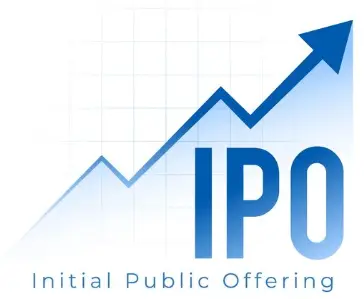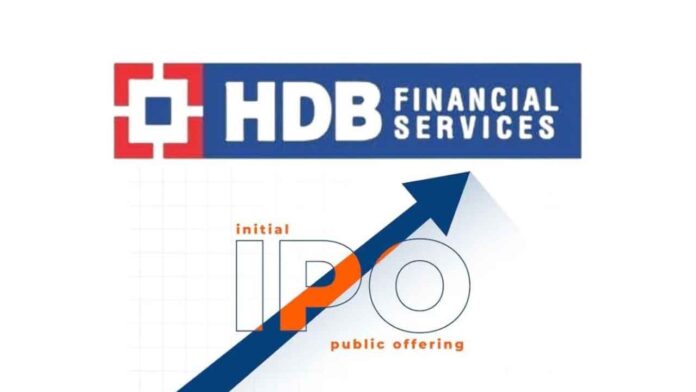HDB Financial Services IPO: A Significant Milestone in India’s Financial Sector
The Indian financial sector is currently abuzz with the Initial Public Offering (IPO) of HDB Financial Services, a prominent Non-Banking Financial Company (NBFC) and Business Process Outsourcing (BPO) arm of HDFC Bank. The subscription period for this significant capital-raising exercise commenced on June 25 and will close on June 27, 2025. HDB Financial Services aims to raise a substantial ₹12,500 crore, a strategic move designed to bolster its capital base for future growth while facilitating a partial divestment by its parent, HDFC Bank, reducing its stake from 94.3% to approximately 74.2% post-IPO.
IPO Structure and Pricing
The IPO comprises a fresh issue of ₹2,500 crore, intended to augment HDB’s Tier-I capital, alongside a larger Offer for Sale (OFS) of ₹10,000 crore by HDFC Bank. The pricing for this much-anticipated offering has been set within a band of ₹700 to ₹740 per equity share. Investors can apply in lots of 20 shares, with a minimum investment of ₹14,800 at the upper end of the price band. This pricing strategy aims to attract a broad spectrum of investors, from retail to institutional.
Navigating Growth and Regulatory Headwinds
HDB Financial Services presents a compelling growth narrative. Its gross loan book has experienced robust double-digit expansion over the last three fiscal years leading up to FY25. As of March 31, 2025, its gross loans surged by an impressive 23.5% annually, reaching ₹1,06,877.6 crore. This growth firmly establishes HDB’s significant footprint in the lending landscape.
However, the company’s financial performance reveals a more nuanced picture. While its net interest income (NII) grew by a respectable 17.3% annually to ₹7,445.6 crore during the same period, its net interest margin (NIM) has seen slight compression, declining from 8.3% to 7.6% by FY25. Additionally, HDB Financial reported an 11.6% year-on-year fall in net profit for FY25, settling at ₹2,175.9 crore. This dip was primarily due to increased credit costs, as its gross non-performing asset (NPA) ratio saw a slight uptick to 2.3% in FY25 from 1.9% the previous year, although it improved from 2.7% in FY23.
A significant factor that could influence investor sentiment is the Reserve Bank of India’s (RBI) draft guidelines aimed at preventing overlapping business activities between banks and their subsidiaries. Should these guidelines be implemented as proposed, they could necessitate further stake reductions or even full divestment by banks in their subsidiaries. This regulatory uncertainty creates a cautious backdrop for the IPO, with some investors potentially opting to await greater clarity post-listing.
Diversified Business Segments
HDB Financial Services operates a well-diversified lending portfolio, catering to a broad spectrum of clients. Enterprise lending, which provides financial solutions to Micro, Small, and Medium Enterprises (MSMEs), constitutes 39.3% of its loan book. Asset financing, including secured loans for commercial vehicles and construction equipment, makes up a substantial 38%. The remaining 22.7% is attributed to consumer financing, offering personal and lifestyle loans. Beyond its core lending activities, HDB also plays a crucial role in providing BPO services, offering essential back-office support and collection services to its parent, HDFC Bank. Revenue from its BPO segment stood at ₹1,216.7 crore in FY25, accounting for 7.5% of its total income from operations of ₹16,300.2 crore.
Valuation in Perspective
From a valuation standpoint, HDB Financial is seeking a post-IPO price-to-book (P/B) multiple of up to 3.4 based on its FY25 financials. This positions it at a discount compared to larger, more established NBFC peers such as Bajaj Finance and Cholamandalam Investment and Finance, which currently trade at P/B multiples of approximately 5.8. This discounted valuation for HDB is largely attributed to its comparatively lower net interest margins and return ratios. Interestingly, HDB’s implied valuation, at 3.4x, remains higher than HDFC Bank’s trailing P/B of 2.9, underscoring the premium associated with its growth potential and diversified business model.
Anchor Investor Confidence and Analyst Views
Ahead of the public issue, HDB Financial Services garnered significant confidence from institutional investors, raising ₹3,369 crore from 141 anchor investors on June 24. Prominent entities including LIC, ICICI Prudential MF, SBI MF, BlackRock, and Goldman Sachs participated, receiving shares at ₹740 apiece. This strong anchor book underscores institutional faith in HDB’s future.
Several leading brokerage firms and market experts have issued "Subscribe" ratings for the HDB Financial Services IPO, citing its strong parentage, diversified and granular loan portfolio, robust asset quality (Gross NPA at 2.3% and Net NPA at 1.38% as of March 31, 2025), and attractive valuation compared to some peers. While the company reported an 11.6% year-on-year decline in profit after tax in FY25, its total income saw a healthy 15% year-on-year increase. Analysts highlight its extensive omnichannel distribution network and prudent risk management as key positives.
Key Dates and Allotment Details
The IPO bidding window is currently open and will close on June 27, 2025. The finalization of the basis of allotment is tentatively scheduled for June 30, 2025, with refunds initiated and shares credited to demat accounts by July 1, 2025. The highly anticipated listing on both BSE and NSE is expected on Wednesday, July 2, 2025. MUFG Intime India Private Limited (Link Intime) is the official registrar for the issue.
Conclusion
As HDB Financial Services embarks on this pivotal journey into the public markets, investors will be carefully weighing its solid growth trajectory, strong backing from HDFC Bank, and diversified business against the backdrop of evolving regulatory landscapes and profitability metrics. The IPO offers a unique opportunity to invest in a key player within India’s dynamic financial sector, making it a focal point for both retail and institutional investors alike.

